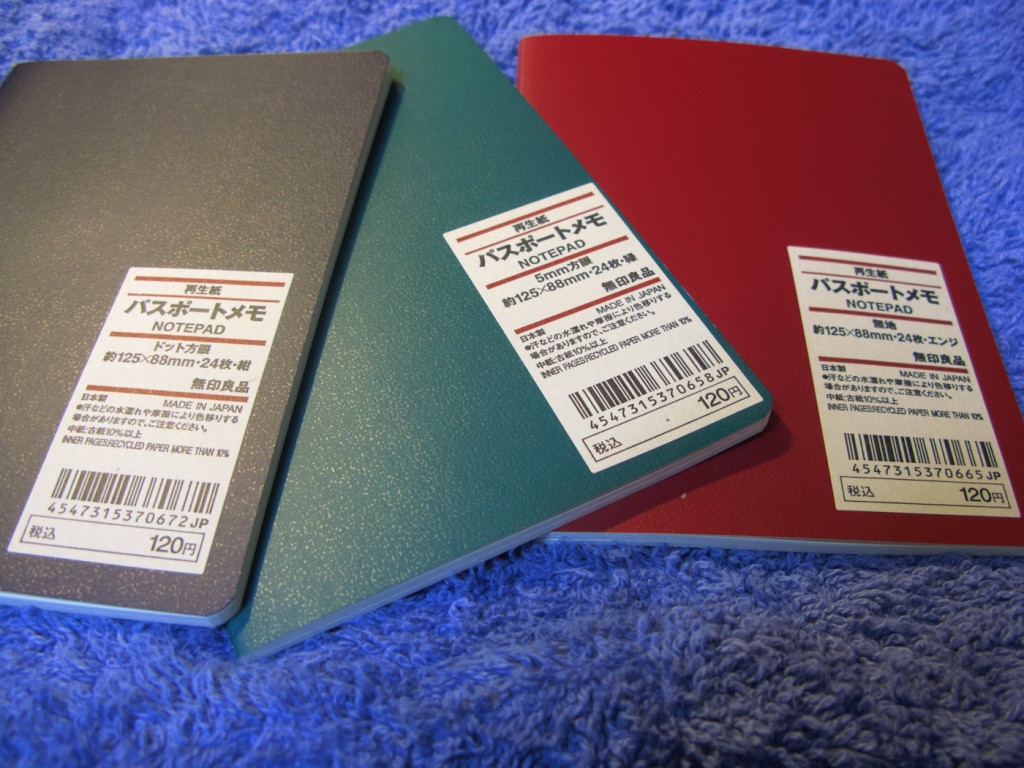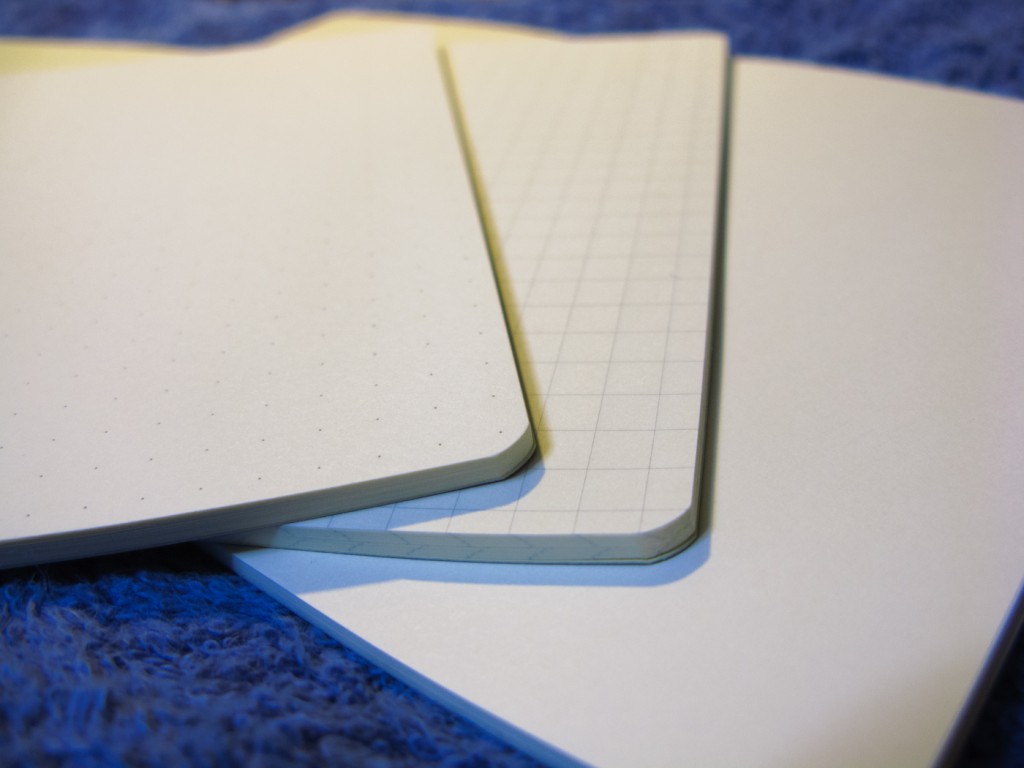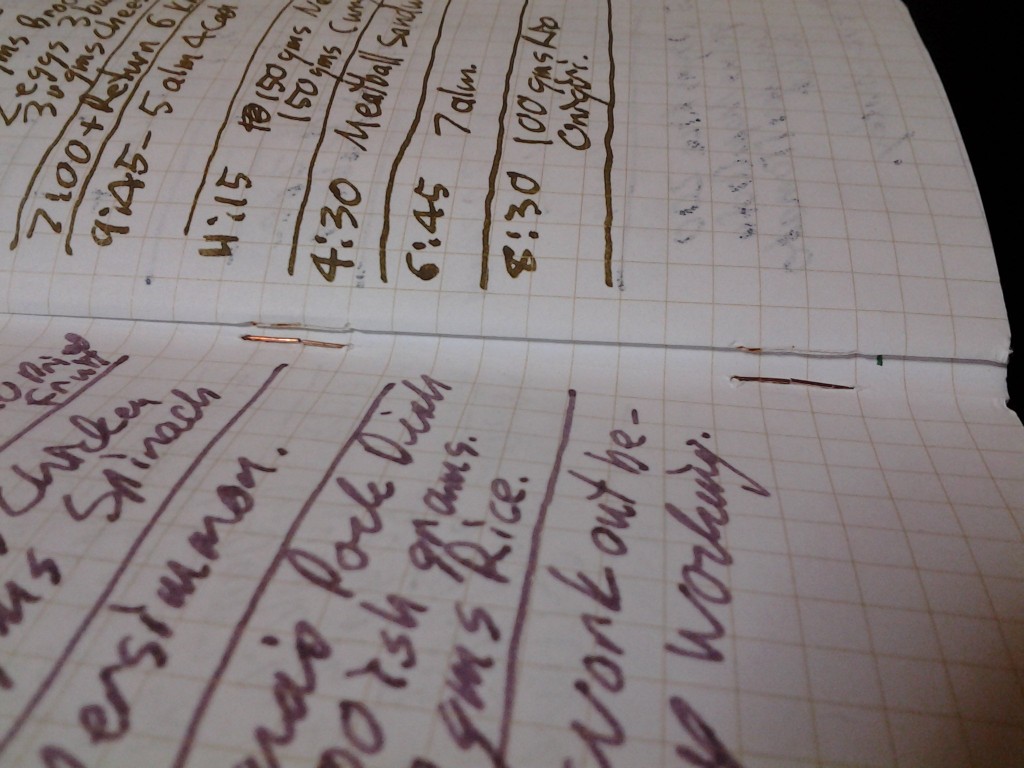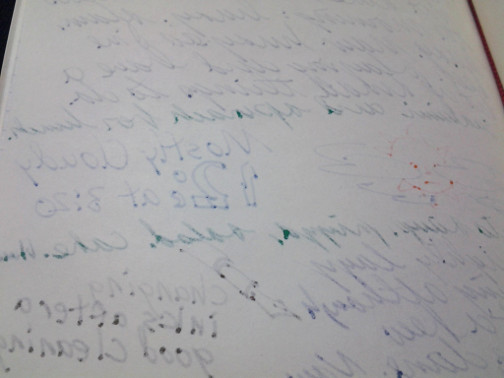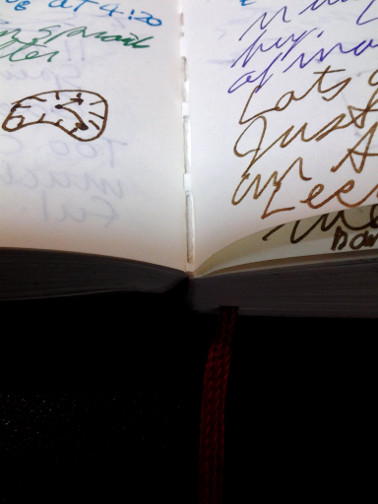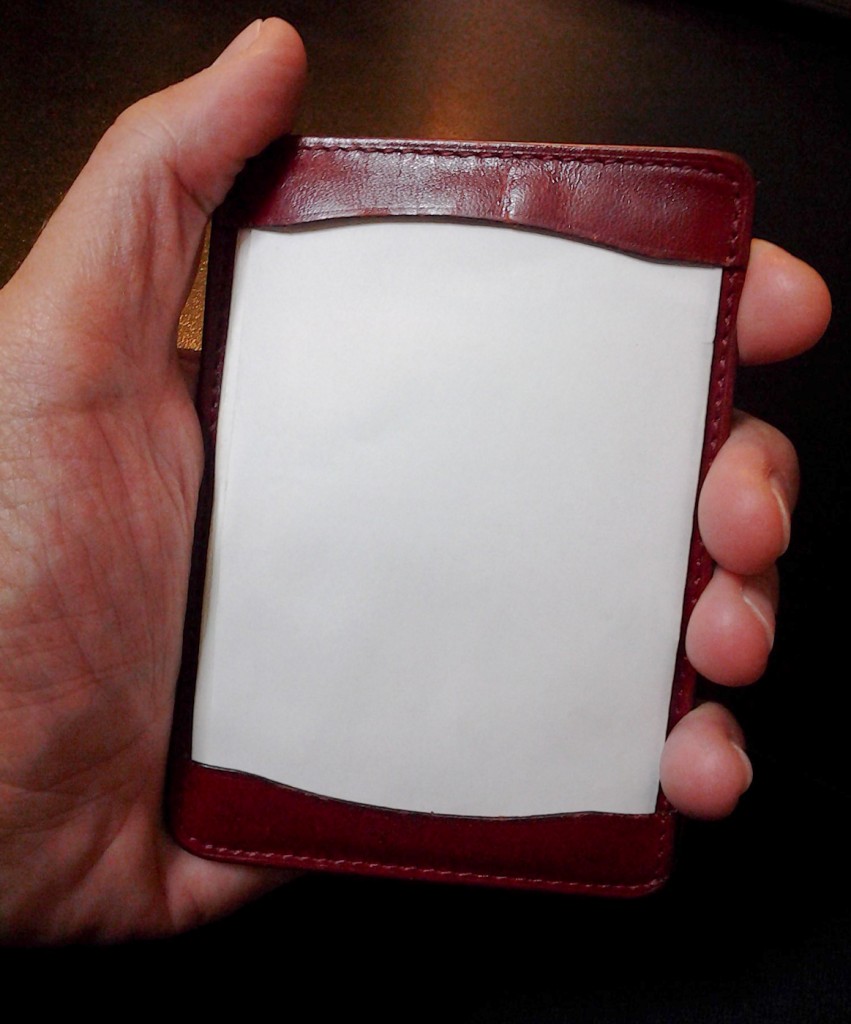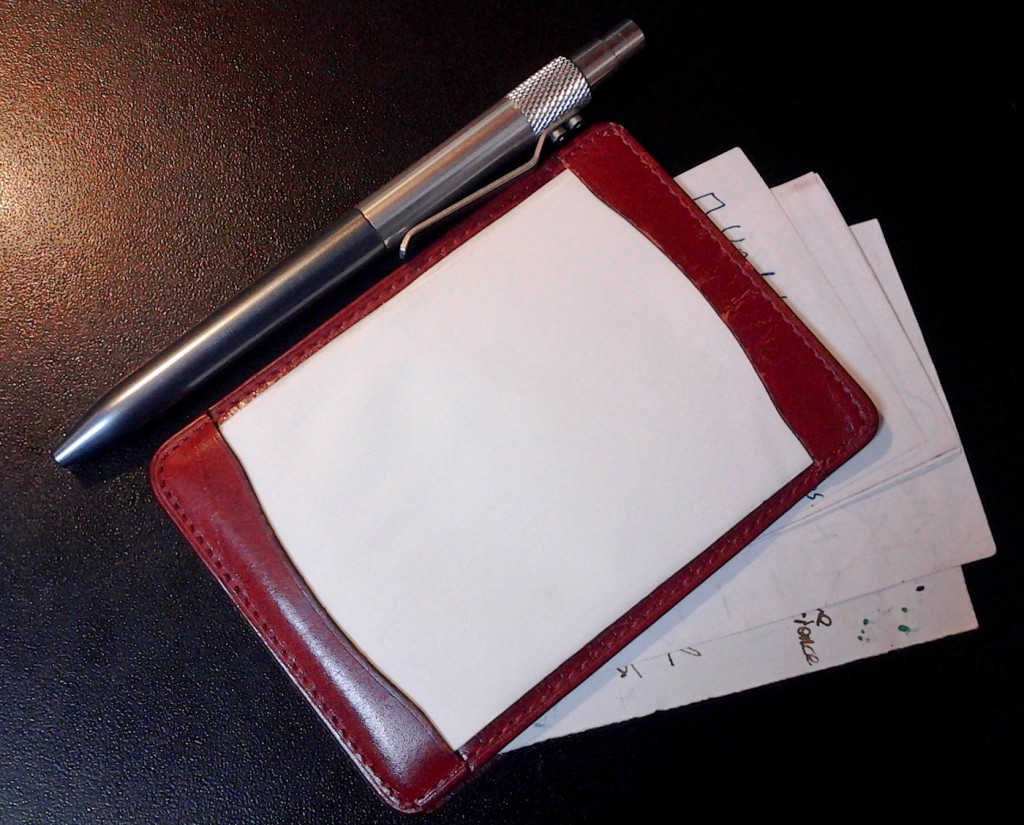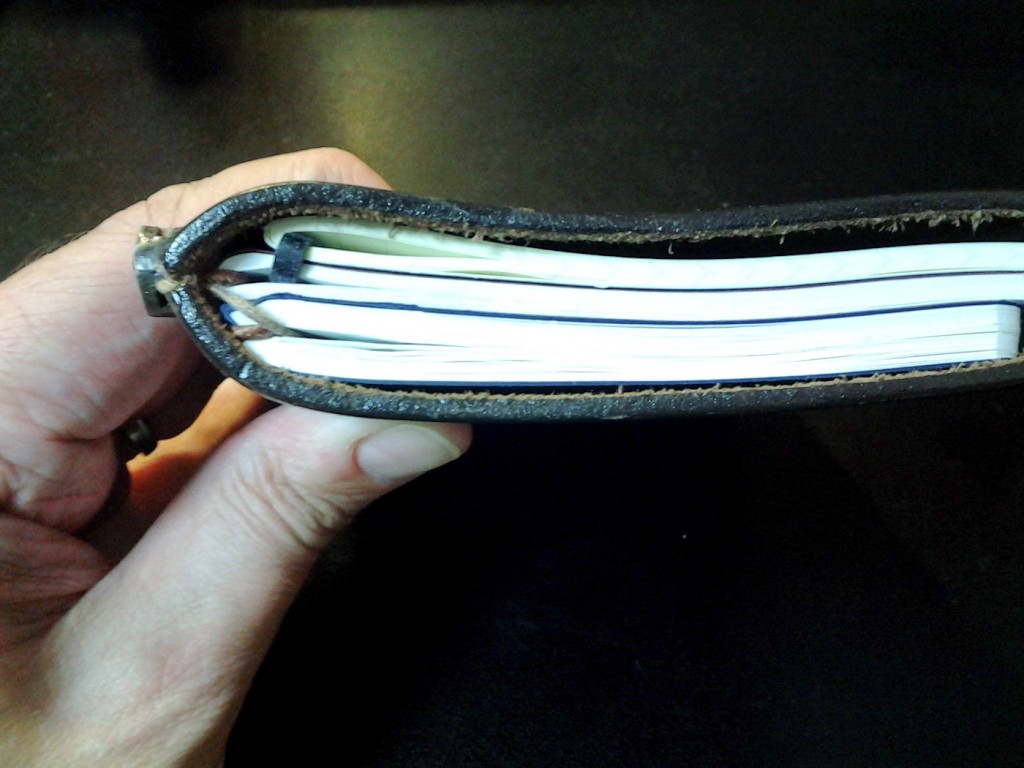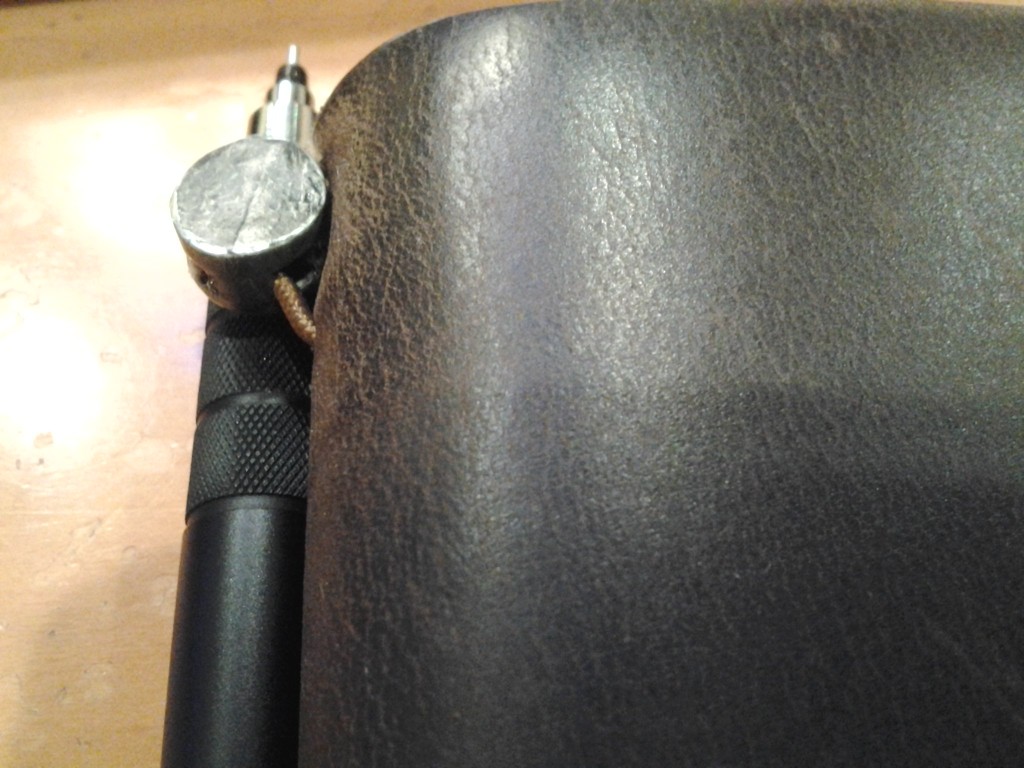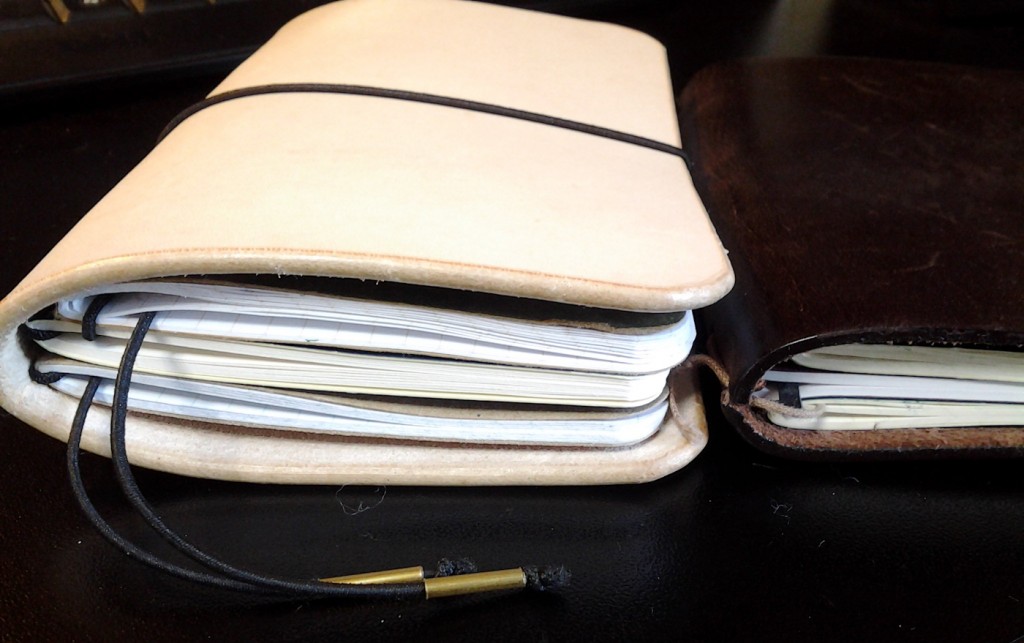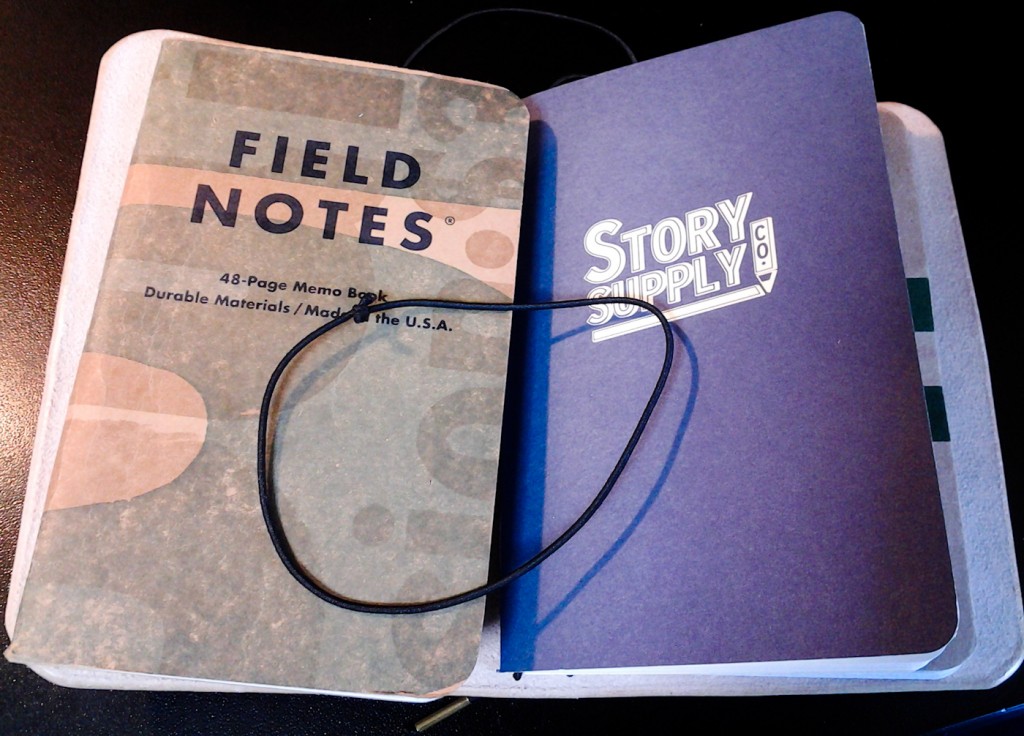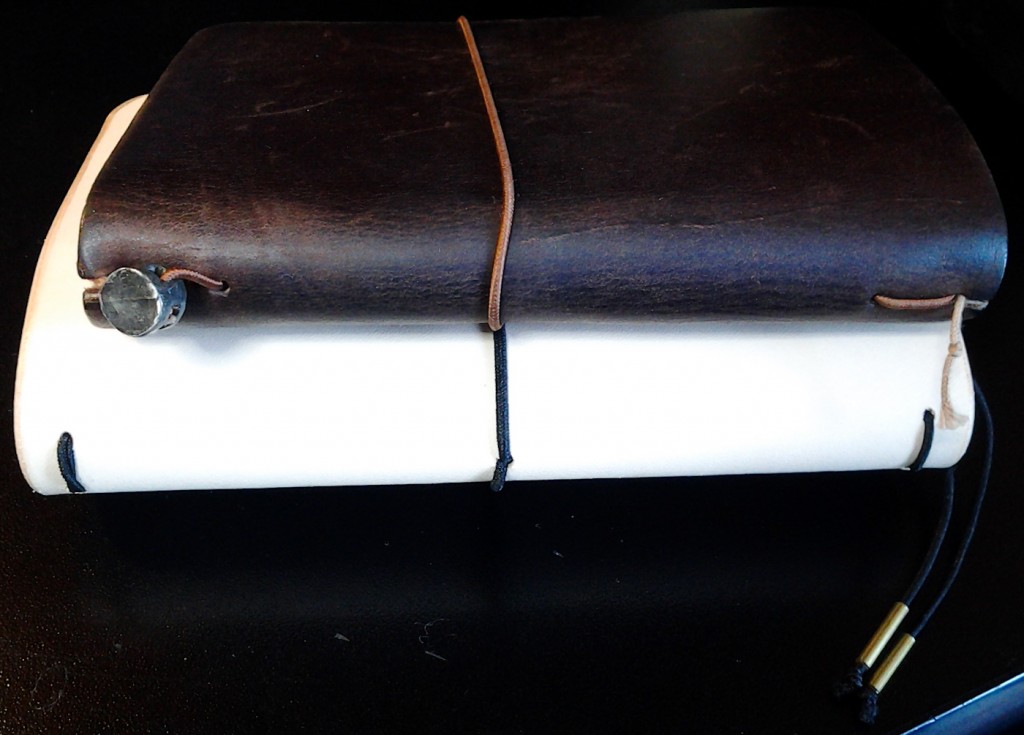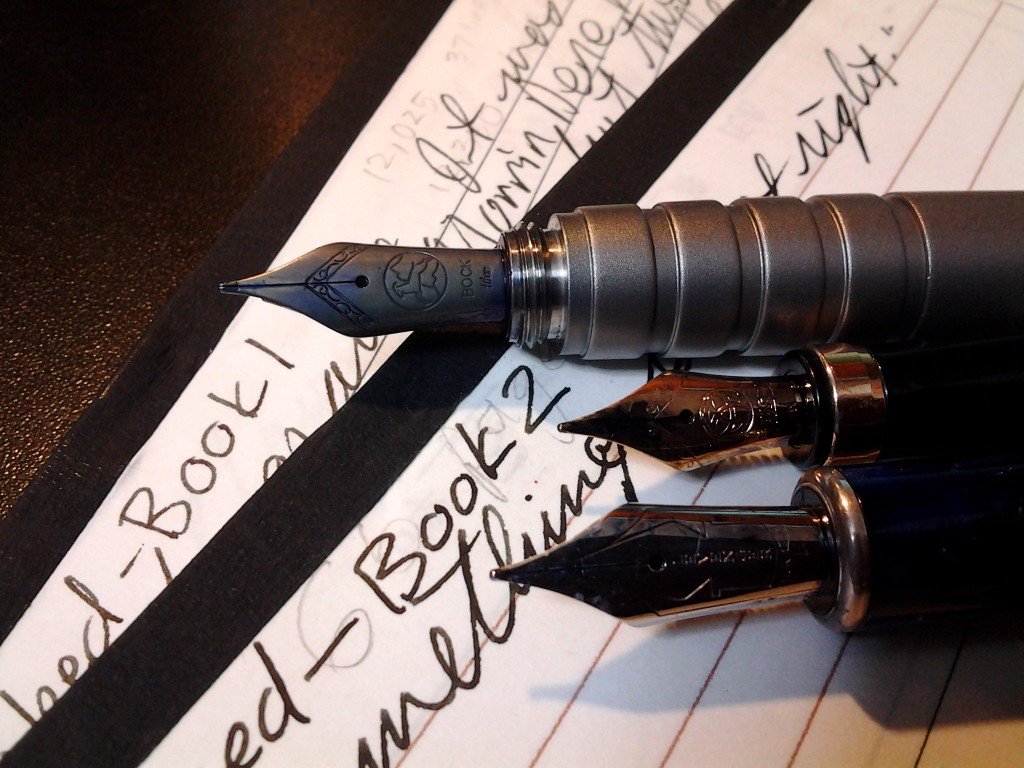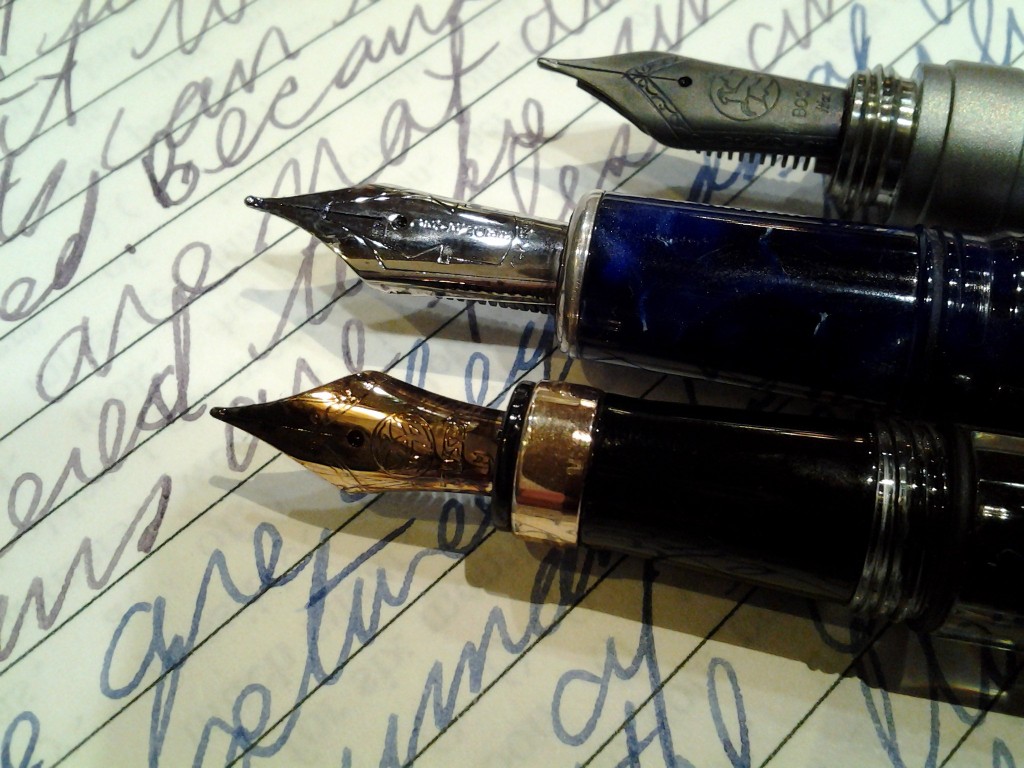I just finished a notebook that was both friendly and unfriendly to fountain pens. I like it a lot, but it also kind of annoys me.
The Field Notes Workshop Companion Book 01 “Wood Working” is one of six notebooks in a boxed set sent as part of the Summer 2015 Field Notes Colors edition.
On paper, so to speak, it seems great. It has French Kraft-Tone 70#T “Standard White Craft” paper with a light brown dot grid pattern. 70#T paper is thick enough to handle most fountain pens and inks.
The notebook also looks great. Each book in the boxed set has a different color cover and a different “workshop” theme: wood working, automotive, gardening, painting, plumbing and electrical. Each book includes information and tips about its theme. The back of the Wood Working includes information on nail varieties, wood working jargon and the always wise “A table saw can be either your best friend or your worst enemy…”
The cover is 100#C card stock that features some excellent design work.
My back page tests showed that the paper could handle every fountain pen and ink I threw at it. Even the heartbreaker, Noodler’s Apache Sunset put down with a steel flex nib, didn’t bleed through or feather.
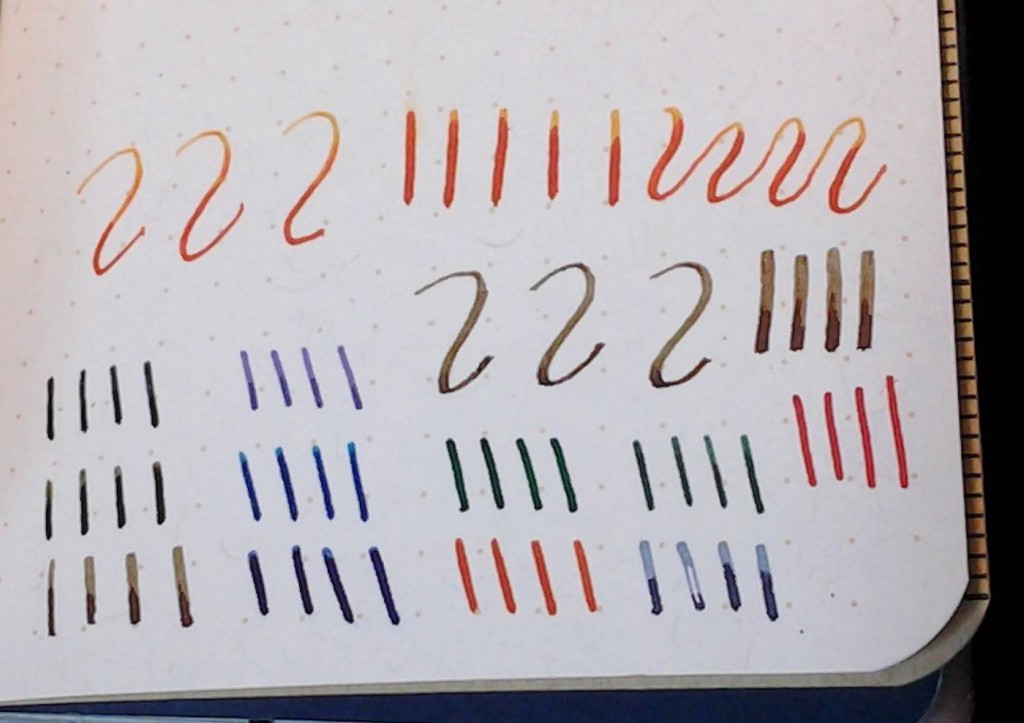
The pen tests. I try to lay down as much ink as I can. That’s Apache Sunset at the top and second from right at the bottom. The 1.1 stub looks great here (on the right above the red lines).
At this point I started to encounter my first “Hmmm” moment. My favorite Field Notes notebook, of the few I’ve used, is the America The Beautiful edition. It has Finch Paper Fine 70#T “Soft White” paper that was smooth and terrific to write on. Because both editions are 70#T, I was expecting a similar experience with the Workshop Companion.
However, the paper in the Workshop Companion notebook felt much rougher and stiffer than the paper in the America The Beautiful. As a result it was much more unforgiving with some of my pens. My Edison Glenmont’s 1.1 mm stub nib, for example, didn’t do well on the paper at all. Instead of a thick line, it tended to leave a thin line with little shading. Other pens did better, but I found the writing experience to be inconsistent and, depending on the nib, scratchy.
Also, although the middle page didn’t start falling out as in my Two Rivers edition, I could see that the staples were starting to give way even though the notebook had been carried in a cover rather than unprotected in my pocket.

The weak staple. You can also see how inconsistently the stub nib performs on the paper at the top of the picture.
I like the Workshop Companion a lot and it draws double takes from almost everyone who sees it. If the it had smoother paper and better staples it would be perfect. Instead, as is, it’s just very good. I’ll look forward to using the rest of the books, but I won’t rush to get more.



